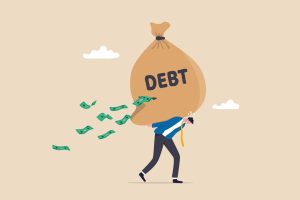 "The global economy, which is driving humankind beyond the limits of the planetary boundaries, is itself driven by the theoretical construct and practice of global finance...Just as we are in ecological overshoot, we are even more in financial overshoot.
"The global economy, which is driving humankind beyond the limits of the planetary boundaries, is itself driven by the theoretical construct and practice of global finance...Just as we are in ecological overshoot, we are even more in financial overshoot.
Finance, in general , and specifically the flow of real investment capital is one of the critical leverage points to shift to a Regenerative Economy that serves humanity and stewards the integrity of earth’s ecosystems.
It will also entail a recognition that the regenerative process that defines thriving, living systems, enabling many of them to be sustainable over the long run, must define the economic system itself.
A Regenerative Economy is characterized by eight principles:
The above is an abbreviated version of an article Transforming Finance and The Regenerative Economy by Hunter Lovins and John Fullerton (Source: The Capital Institute – www.capitalinstitute.org) was published in Green Money Journal
 Redirecting finance away from harmful activities and toward business models and activities that contribute to the global goals on nature, climate and sustainable development is essential for ensuring a habitable and thriving planet.
Redirecting finance away from harmful activities and toward business models and activities that contribute to the global goals on nature, climate and sustainable development is essential for ensuring a habitable and thriving planet.
CHATHAM HOUSE recently published this article comparing global investments going into clean energy vs fossil fuels: "According to the International Energy Agency,
The question is, why has the private sector’s enthusiasm for hydrocarbon investment continued at such a high level – beyond what is needed to exploit fully existing energy assets – despite the evident risks?
This is reflected in the vigour with which some major oil companies have resisted shareholder initiatives requiring them to give more weight to climate change in their decision-making. A plausible explanation and potentially important factor is ‘moral hazard’. In this case investors know the high risk of continuing to invest in hydrocarbon assets, but are attracted by the returns.
They assume that governments will either choose to bail them out should the risks crystallize, or be forced to do so because the consequence for the financial system and national economy would be too severe.
The above is an abbreviated version of fan article from The Chatham House, which was reproduced (with permission) in abbreviated format and bullet points added. Read the full article in: Creon Butler, Chatham House, June 27, 2024, Policymakers need to address climate-related ‘moral hazard’ in financial markets
 "If you look at the relationship between debt and oil, the US is currently raising debt at about a billion dollars an hour while simultaneously drawing down the strategic petroleum reserve.
"If you look at the relationship between debt and oil, the US is currently raising debt at about a billion dollars an hour while simultaneously drawing down the strategic petroleum reserve.
The relationship between those two is never connected and the amount of debt the US now has, which is around $34 trillion, is probably more than all the extractable crude oil on earth at today's prices.
Societies believe our wealth is solely because of money and ingenuity. These are important but both rely fully on energy, materials, and ecology. The divergence between these two narratives is widening rapidly."

According to the 2024 WWF Living Planet Report "...globally, over half of GDP (55%) – or an estimated US$58 trillion – is moderately or highly dependent on nature and its services. Yet our current economic system values nature at close to zero, driving unsustainable natural resource exploitation, environmental degradation and climate change.
Filling these gaps demands a seismic shift at global, national and local levels to get finance flowing in the right direction, away from harming the planet and toward healing it
 The transition away from a collapse-prone financial system and economy, both of which are driving ecological collapse will not be quick or easy.
The transition away from a collapse-prone financial system and economy, both of which are driving ecological collapse will not be quick or easy.
References:
 1, Read about Systems Thinking and Why Should You Care About Systems Thinking?
1, Read about Systems Thinking and Why Should You Care About Systems Thinking?
2. Regenerative Economics - Why Should You Care About Regenerative Economics?
3. Regenerative Agriculture - Why Should You Care About Regenerative Agriculture?
4.Connect with Green Money Journal, which has been covering sustainable business, impact investing, energy & climate change, food and farming, which has been published since 1992 by Cliff Feigenbaum.
5. Nate Hagens is a great source for information about finance. After ten years in finance, Nate left Wall Street to study the interrelationships between energy, ecology, and economics—and the implications for human futures. Nate holds a master’s degree in finance with honors from the University of Chicago and a Ph.D. in natural resources from the University of Vermont. His podcasts are excellent - The Great Simplification, - where he has conversations with experts in energy, ecology, government, technology, and the economy to provide a systemic view of the world around us.
6. Refresh your memory on the state quo of the Earth with a snapshot of where we are at globally.
7. Also check out the KNOWLEDGE BASE, where you will find all references for this section. This is an evolving website, and there is no difference in the reference section - it will grow over time.
© Copyright 2024 1Earth P/L ta Lifeforce Matrix